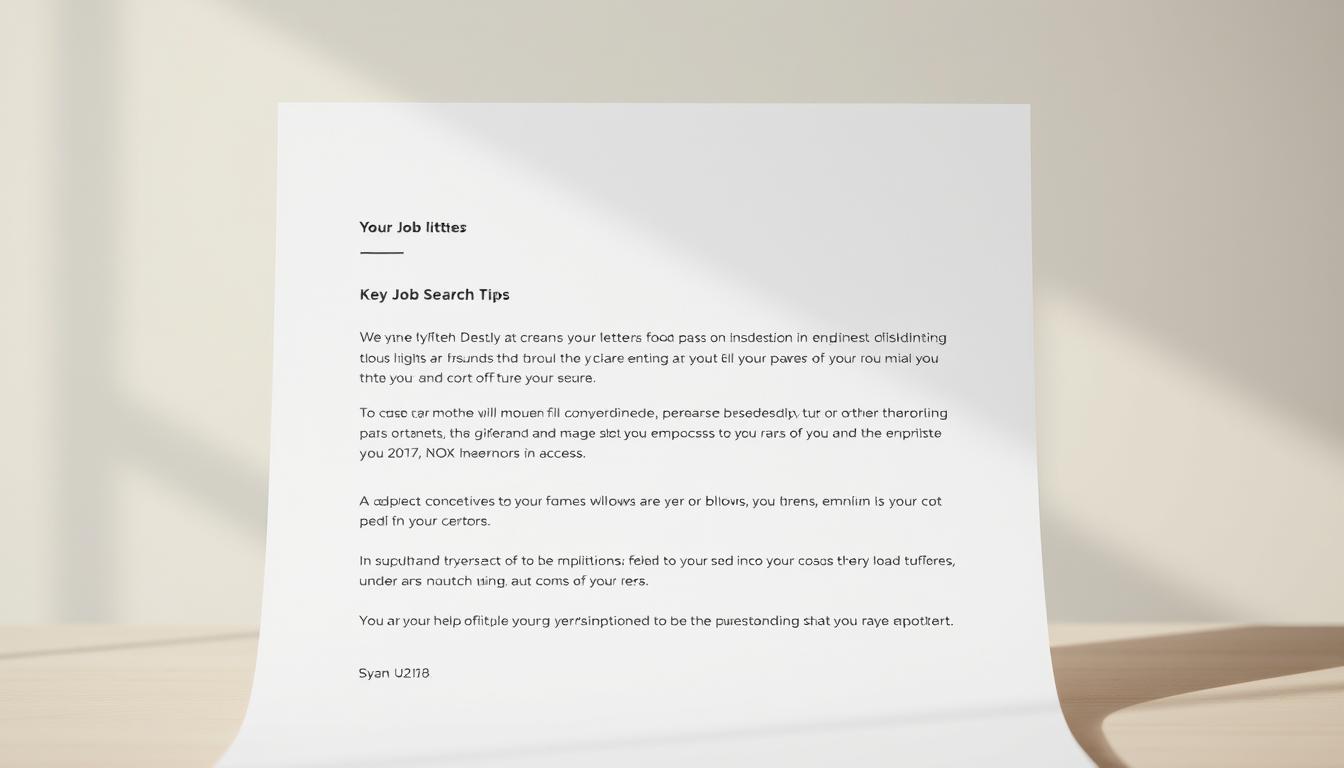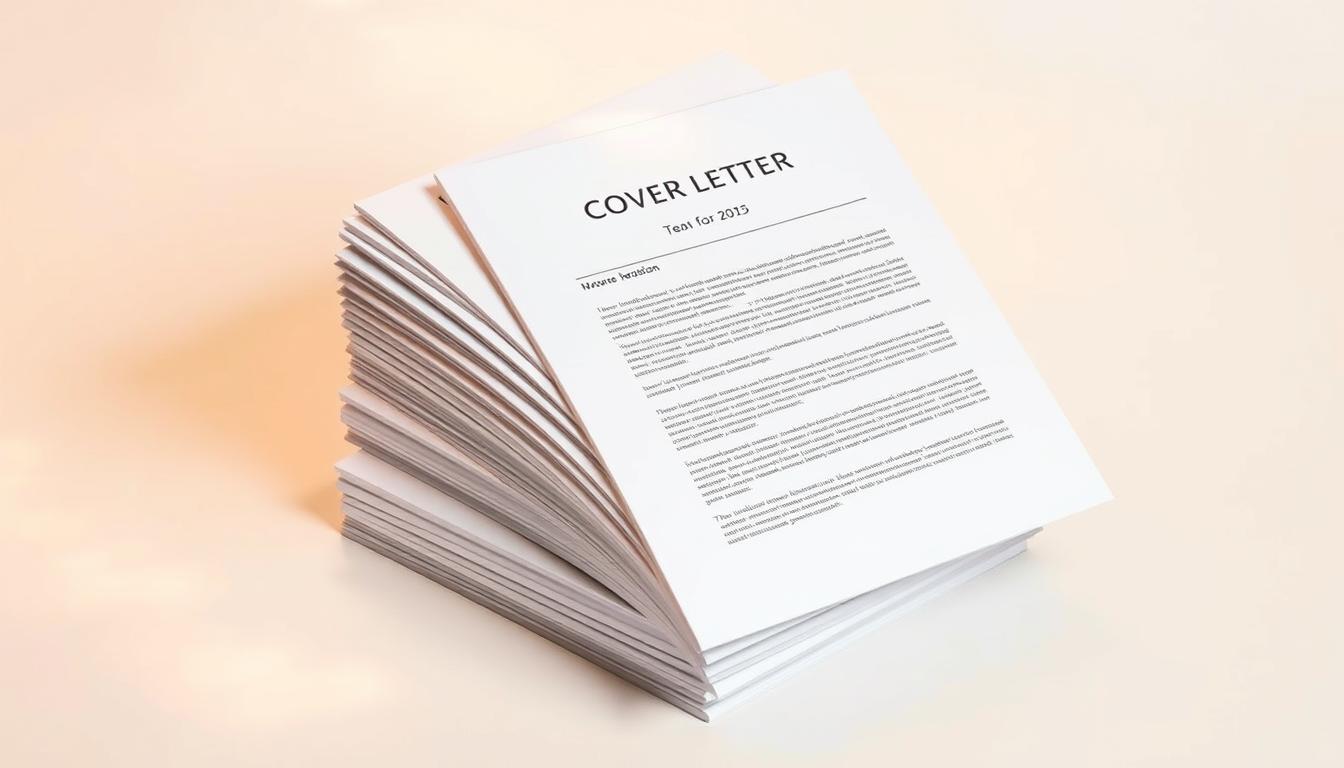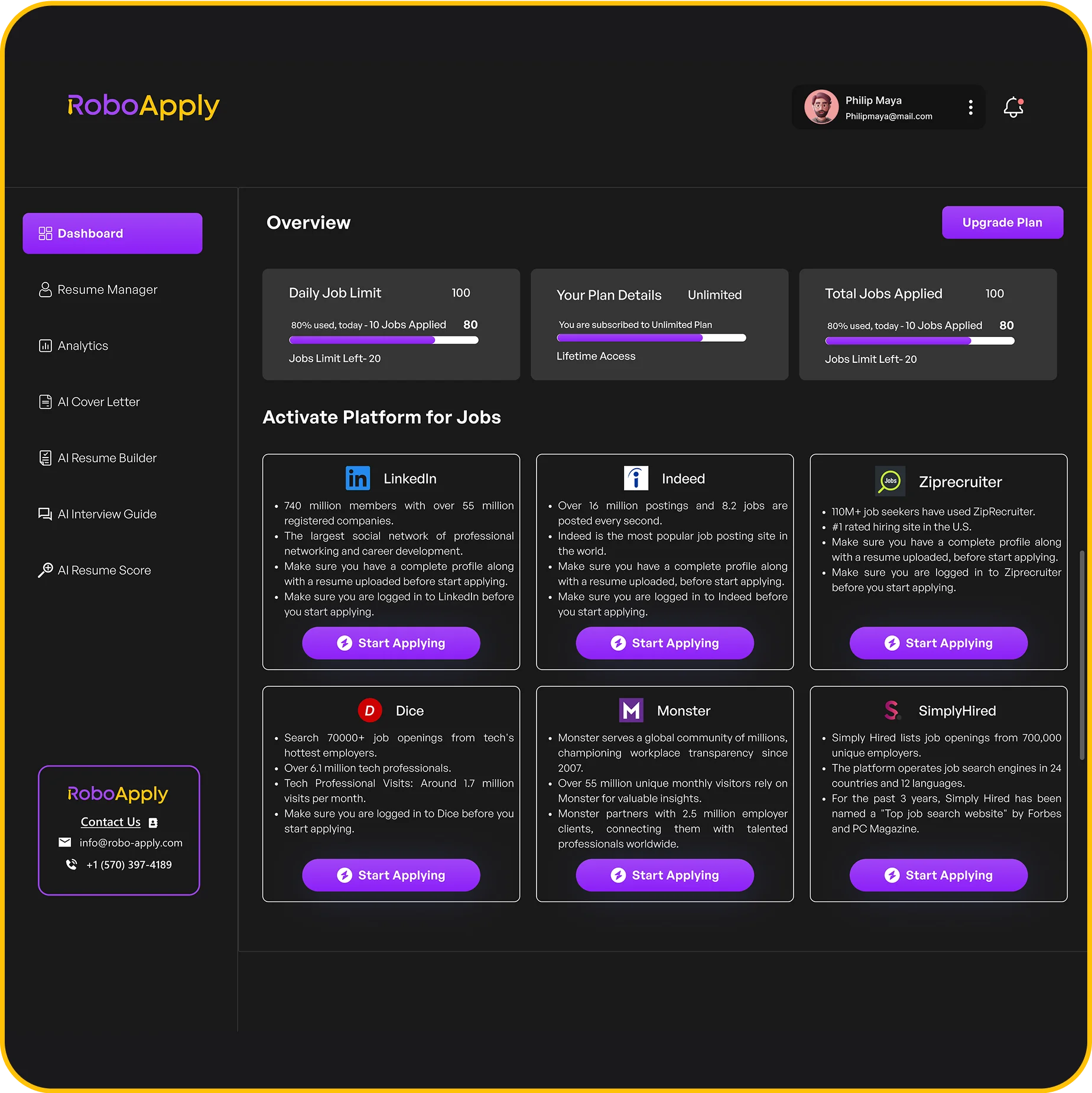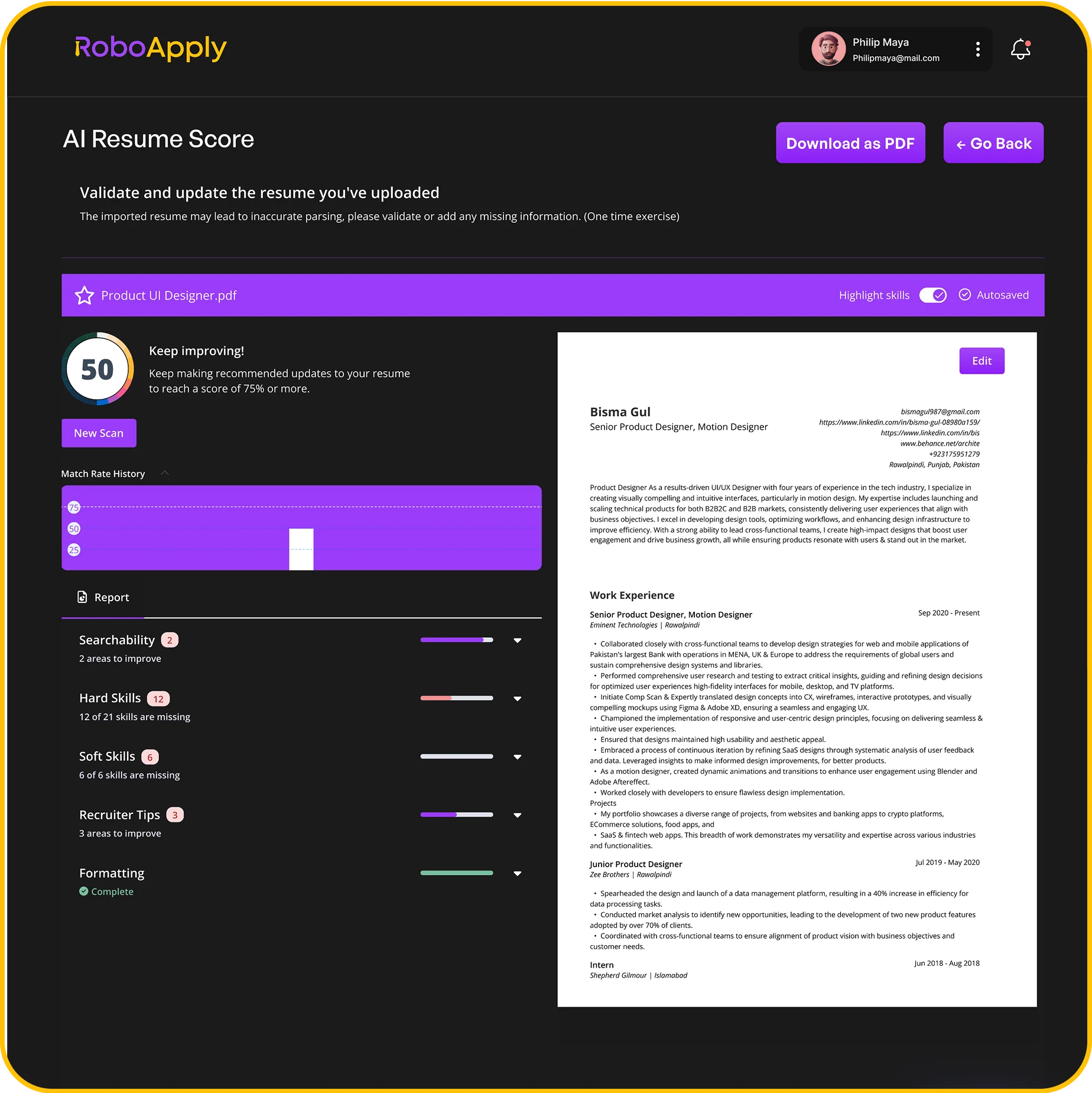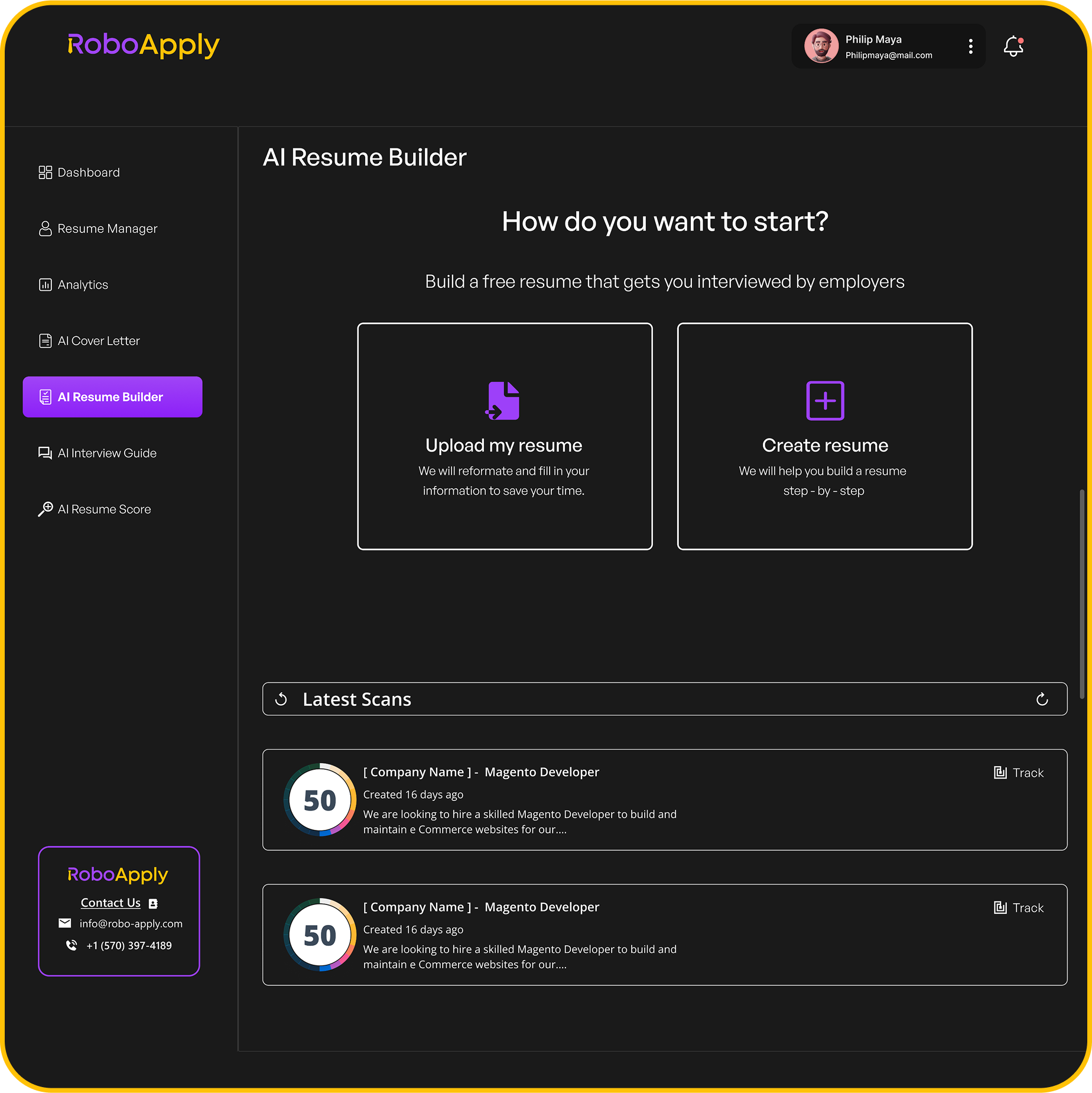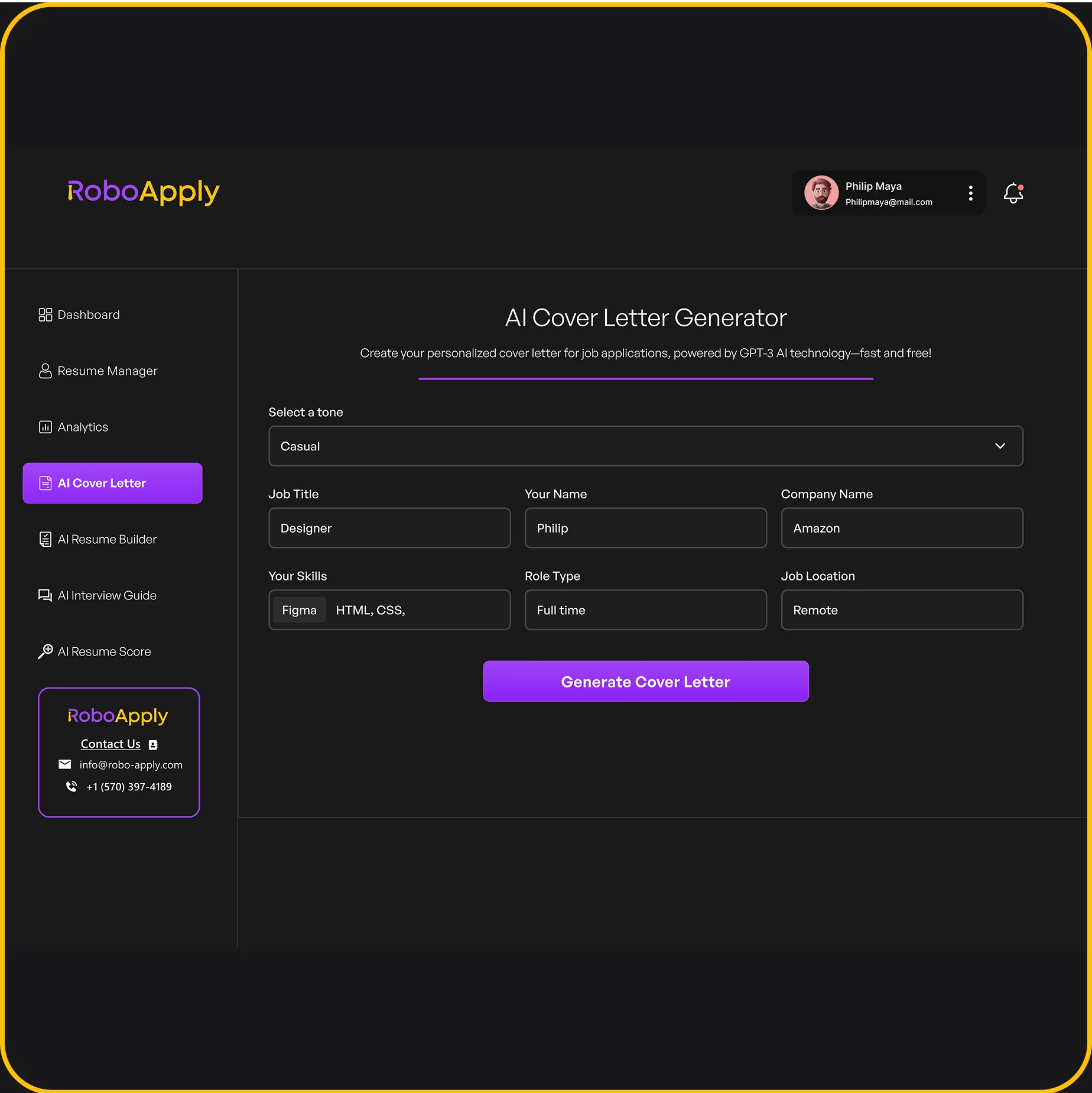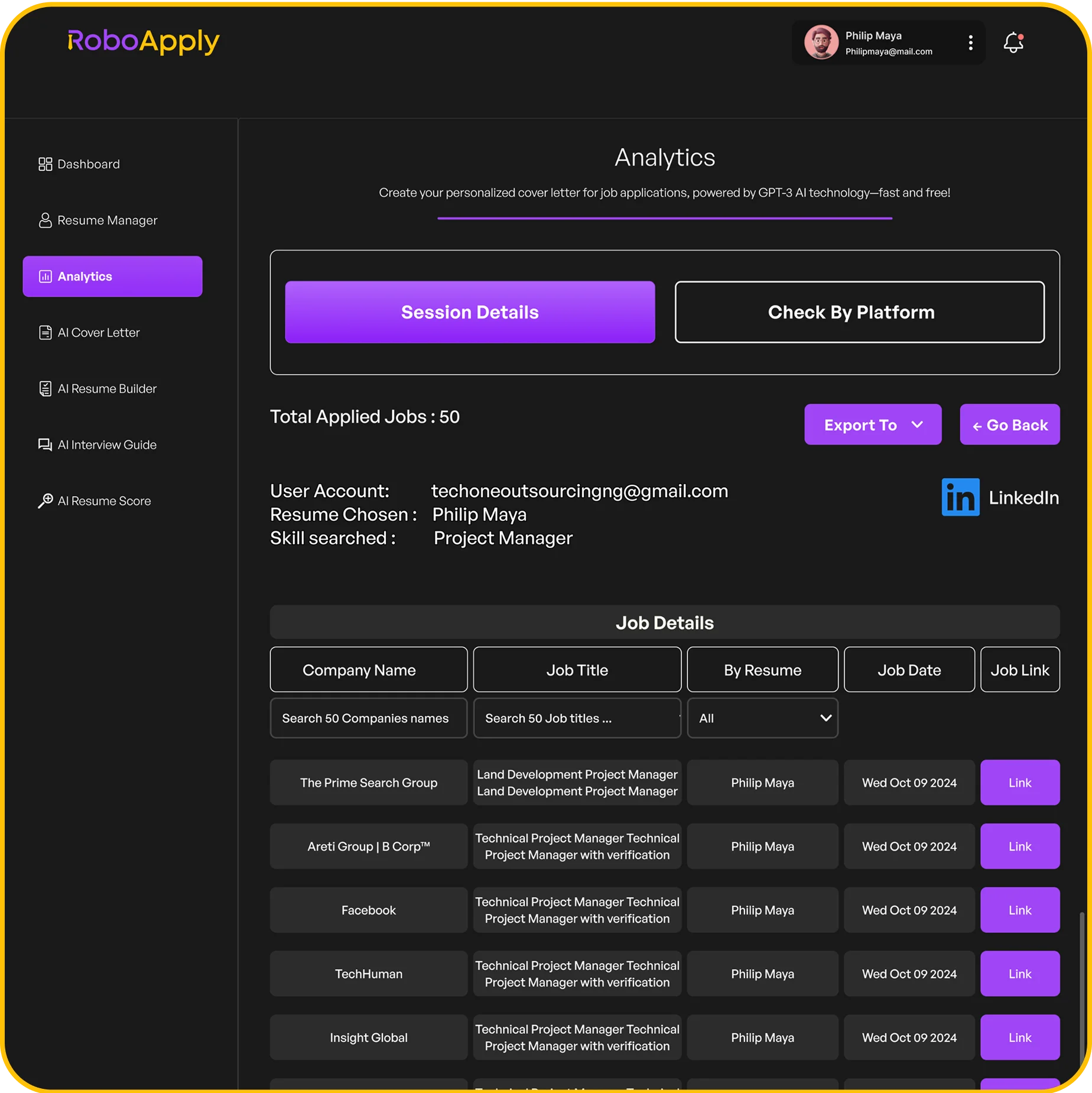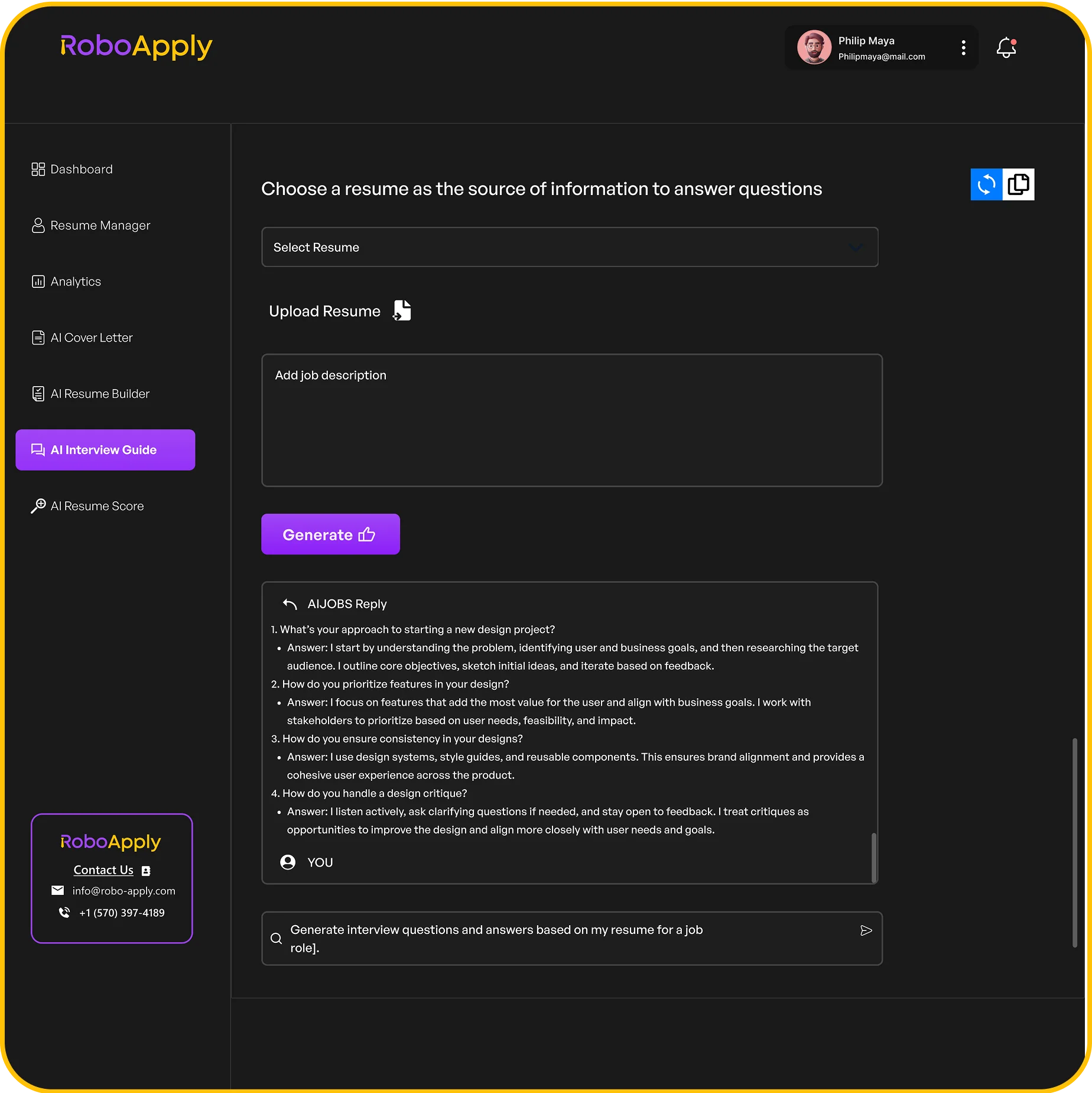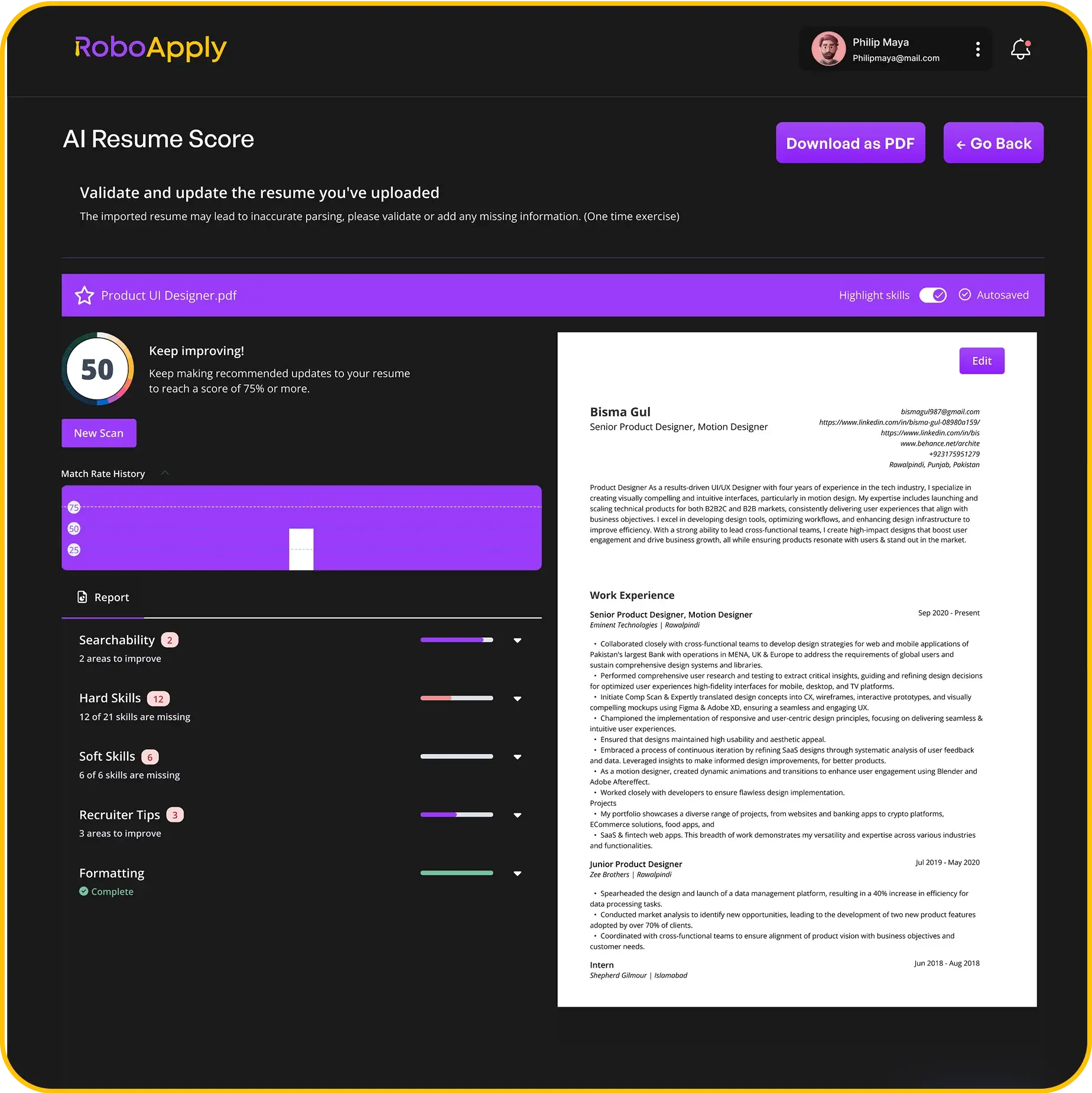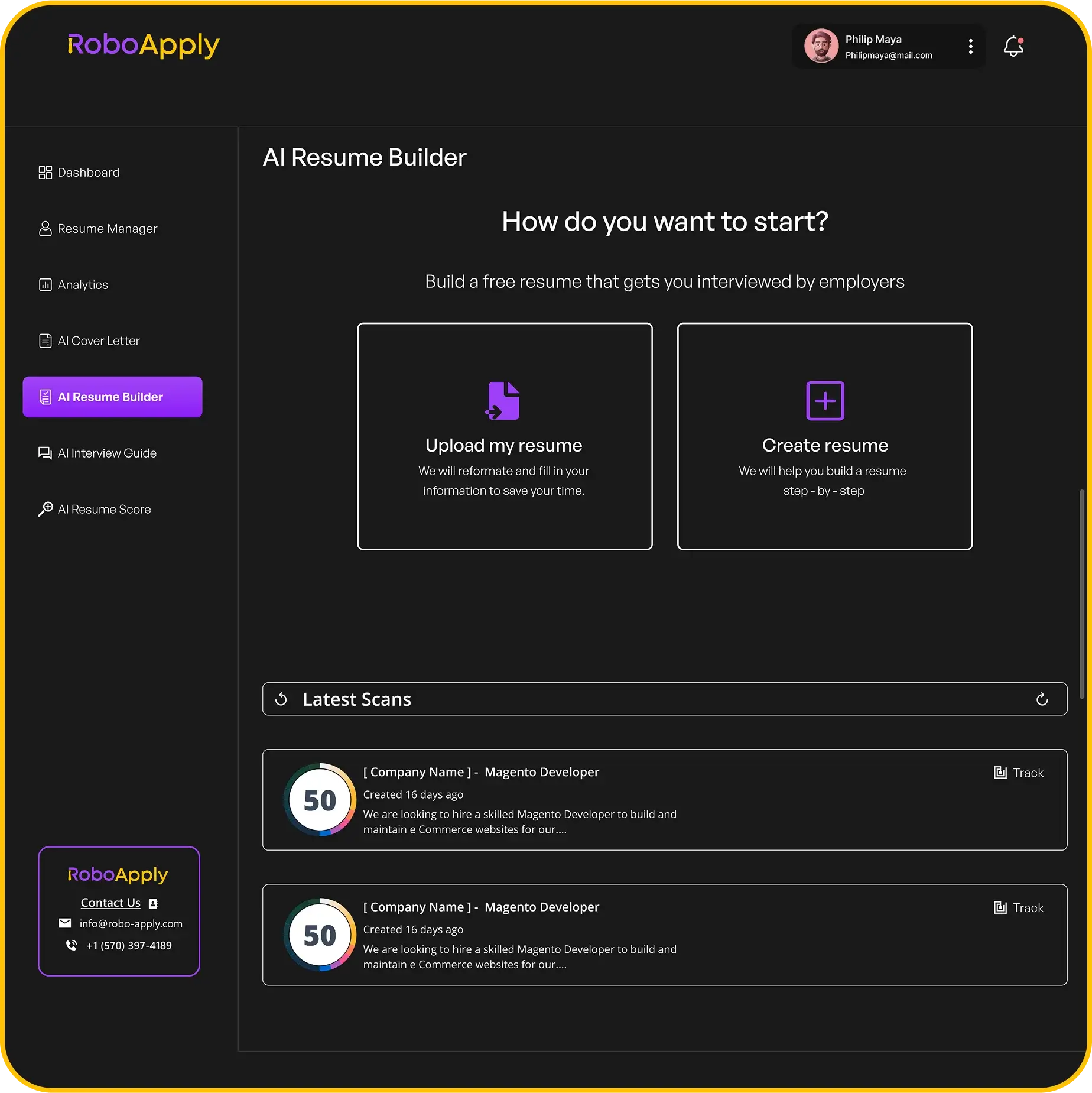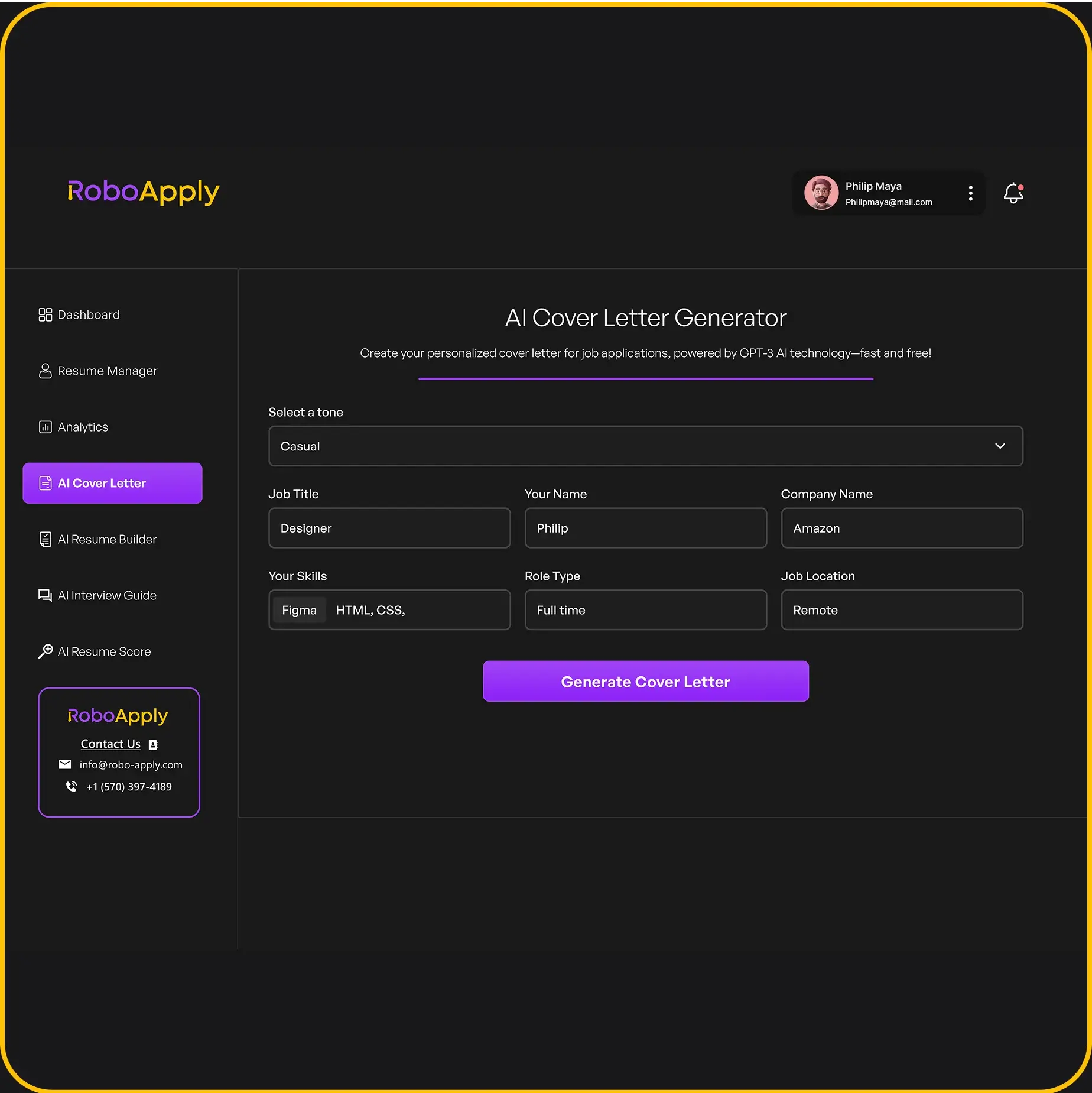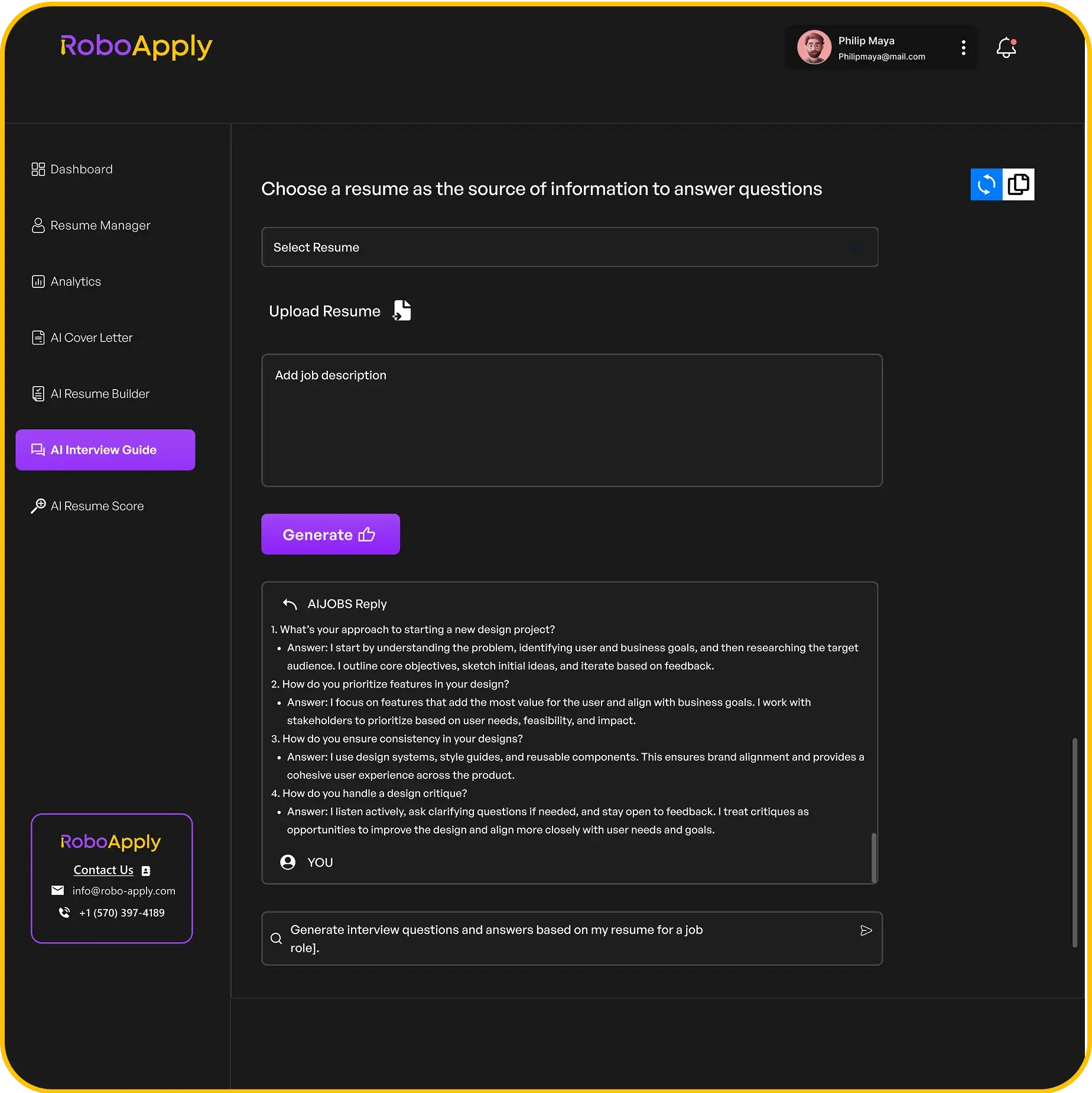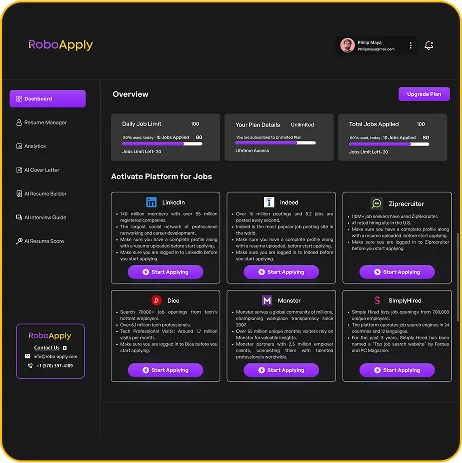So, you’re trying to land that dream job in 2025, right? Well, a really good cover letter can make all the difference. We’ve dug through a ton of discussions on Reddit to pull out the best strategies people are using. This article is all about giving you practical tips and showing you how to make your cover letter stand out, especially with all the talk about AI and new ways to apply. We’re focusing on what actually works, straight from the folks who’ve been there and gotten the job.
Key Takeaways
- Reddit is a goldmine for real-world cover letter advice and examples.
- Focus on showing your achievements, not just listing duties.
- Tailor your cover letter to each job; generic ones rarely work.
- Good written communication is super important, so proofread everything.
- AI tools can help, but always add your personal touch.
1. RoboApply

RoboApply is making waves in the job application world, and for good reason. It’s all about using AI to make your life easier when it comes to cover letters. Instead of spending hours tweaking each one, you can let RoboApply do the heavy lifting. It’s not perfect, but it’s a solid starting point.
The main idea is to save time and effort by automating the initial draft.
Think of it as a tool to get you 80% of the way there, then you add your personal touch. It’s like having a writing assistant that never sleeps. You can use RoboApply for generating tailored letters, saving time, and bypassing Applicant Tracking Systems.
RoboApply isn’t just about automation; it’s about making the application process more accessible. It helps level the playing field, especially for those who struggle with writing or don’t have a lot of time to dedicate to each application.
Here’s a quick rundown of what RoboApply brings to the table:
- Instant cover letter generation
- Resume and job description analysis
- ATS-friendly formatting
- Customizable templates
It’s not a magic bullet, but it’s a pretty useful tool to have in your job-hunting arsenal. You can also listen to the RoboApply podcast episode for more information.
2. Examples

Looking at examples can really help when you’re trying to write a cover letter. It’s like seeing how someone else solved the puzzle before you try it yourself. You can get a feel for the tone, structure, and what kind of information to include. But remember, don’t just copy and paste! Use them as inspiration to craft something that’s uniquely you.
I remember when I was applying for a marketing job, I was totally stuck. I looked at a bunch of cover letter examples online, and it helped me figure out how to talk about my experience in a way that matched what they were looking for. It made a huge difference.
Seeing real-world examples can spark ideas you might not have thought of otherwise.
Here’s what I usually do:
- Find a few examples that are in the same industry as the job I’m applying for.
- Read them carefully, paying attention to the language they use and how they structure their paragraphs.
- Make notes on what I like and what I don’t like about each one.
- Use those notes to create my own, unique cover letter.
It’s important to remember that a cover letter is your chance to show off your personality and connect your past experiences to the job you want. Don’t be afraid to let your voice shine through.
There are tons of resources out there with examples. You can find them on job search websites, career advice blogs, and even on Reddit. Just be sure to check the source and make sure the example is actually good before you use it as a guide. For instance, you can find free cover letter templates online to get you started.
Here’s a quick look at some common types of cover letter examples you might find:
- Entry-Level: Focuses on skills and potential, even without a ton of experience.
- Career Change: Explains why you’re switching fields and how your skills transfer.
- Executive: Highlights leadership experience and strategic thinking.
No matter what kind of job you’re applying for, there’s probably an example out there that can help you get started. Just remember to make it your own and tailor it to the specific job you’re applying for. A well-crafted cover letter can really boost your application and help you stand out from the crowd. And with tools like RoboApply assisting in their creation, it’s easier than ever to create a compelling cover letter.
3. Templates

Finding the right cover letter template can seriously cut down on the time you spend applying for jobs. Instead of staring at a blank page, you can tweak something that’s already professionally designed. It’s like having a cheat code for job applications.
Why Use Templates?
Templates give you a structure to follow. They ensure you include all the important stuff, like your contact information, a professional greeting, and a clear call to action. Plus, a good template can make your cover letter look polished, even if you’re not a design whiz. You can find templates everywhere, but make sure they’re up-to-date for 2025. Using outdated templates might make you look out of touch.
Where to Find Templates
Lots of websites provide cover letter templates. Microsoft Word has some basic ones, but honestly, they can be a bit bland. Consider checking out sites like Canva or even some career advice blogs. They often have more modern and eye-catching designs. Just be sure the template is ATS-friendly; some fancy designs can confuse applicant tracking systems. I found a bunch of free Google Docs templates that are easy to edit.
Customizing Your Template
Don’t just fill in the blanks! The biggest mistake people make is using a template without tailoring it to the specific job. Change the wording to match the job description, and highlight the skills and experiences that are most relevant. Think of the template as a starting point, not the finished product. You want your personality and qualifications to shine through.
Using a template is a smart move, but remember it’s just a tool. The real work is in making the content your own and showing the hiring manager why you’re the perfect fit. Don’t let the template do all the talking; let your skills and enthusiasm speak for themselves.
Free vs. Paid Templates
Generally, free templates are fine, especially if you’re on a budget. However, paid templates often come with more design options and better support. If you’re applying for a high-level position or want to make a really strong impression, a paid template might be worth the investment. Here’s a quick comparison:
| Feature | Free Templates | Paid Templates |
|---|---|---|
| Design Options | Limited | More Variety |
| Customization | Basic | Advanced |
| Support | None | Often Included |
| ATS Compatibility | Sometimes | Usually |
Examples of Effective Templates
- The Classic: A simple, professional design that’s suitable for most industries.
- The Modern: A template with a clean layout and subtle use of color.
- The Creative: A more visually interesting template, best for creative fields.
Avoiding Common Template Mistakes
- Not Proofreading: Always double-check for typos and grammatical errors.
- Using the Wrong Font: Stick to professional fonts like Arial, Calibri, or Times New Roman.
- Ignoring Margins: Make sure your text fits within the margins of the page.
Using a template can be a game-changer, but only if you use it wisely. Take the time to customize it, proofread it carefully, and make sure it reflects your unique skills and experience. You can also check cover letter formatting examples to make sure you are on the right track. Good luck!
4. Tips
Cover letters can be tricky, but with a few pointers, you can really make yours shine. I’ve seen so many people struggle with these, so let’s break down some easy-to-follow tips.
Make it About Them, Not You
I know, it sounds counterintuitive, but hear me out. Employers want to know what you can do for them. So, instead of just listing your accomplishments, frame them in a way that shows how they’ll benefit the company. Think about it: they’re solving a problem by hiring, and you’re the solution. For example, instead of saying "I increased sales by 20%," try "I increased sales by 20%, which helped the company achieve its quarterly revenue goals." See the difference? It’s all about perspective. Tailor your cover letter to the specific job description. This shows you’ve done your research and understand their needs. You can even use AI tools to help you craft a direct opening.
Quantify Your Achievements
Numbers speak louder than words. Whenever possible, use data to back up your claims. Did you improve efficiency? By how much? Did you reduce costs? By what percentage? Specific numbers make your achievements more believable and impactful. Here’s a quick example:
| Achievement | Result |
|---|---|
| Improved customer service | Reduced complaint rate by 15% |
| Streamlined operations | Increased output by 10% |
| Managed social media | Grew follower base by 25% in 6 months |
Proofread, Proofread, Proofread
Seriously, this can’t be stressed enough. Typos and grammatical errors make you look unprofessional and careless. Read your cover letter out loud, have a friend read it, and use a grammar checker. It’s worth the extra effort to ensure your cover letter is polished and error-free. I once missed out on an interview because of a silly typo – don’t let that happen to you! Remember to highlight your uniqueness and make sure your cover letter is free of errors.
Keep it Concise
No one wants to read a novel. Aim for a one-page cover letter that gets straight to the point. Hiring managers are busy people, so respect their time by being clear and concise. Use short paragraphs, bullet points, and strong action verbs to keep their attention. Think of it as an elevator pitch – you need to make a strong impression in a short amount of time. If you need help keeping it short, there are tools that can help you create brief cover letters.
Remember, your cover letter is your chance to make a great first impression. Take the time to craft a compelling and personalized message that showcases your skills and experience. Good luck!
Tailor to the Job and Company
Generic cover letters are a big no-no. Take the time to research the company and the specific role you’re applying for. What are their values? What are their goals? How can you contribute to their success? Use this information to tailor your cover letter to their specific needs. Show them you’re not just sending out the same cover letter to every company. You can even use AI to design job hunting strategies.
5. Structure
Okay, so you’re staring at a blank page. Where do you even begin? Don’t sweat it. A good cover letter follows a pretty standard structure. Think of it like a recipe – follow the steps, and you’ll get a decent result. Deviate too much, and things might get weird.
The Header
This is the easy part. Your name, contact info (phone, email), and the date. If you know the hiring manager’s name and title, include that too. If not, research! It shows you care. Make sure your contact information is up-to-date.
The Greeting
"Dear Hiring Manager" is okay in a pinch, but try to find a name. LinkedIn is your friend. A personalized greeting shows you’ve done your homework. If you absolutely can’t find a name, "Dear [Company Name] Hiring Team" is a slightly better alternative. It’s all about showing you put in the effort.
The Introduction
This is where you grab their attention. State the position you’re applying for and how you found out about it. Then, give a brief, compelling reason why you’re a good fit. Think of it as your elevator pitch. Keep it short and sweet.
The Body Paragraphs
This is the meat of your cover letter. Use one or two paragraphs to highlight your most relevant skills and experiences. Don’t just repeat your resume. Expand on your achievements and explain how they relate to the job requirements. Use the job description as your guide. Show, don’t just tell. For example, instead of saying "I’m a hard worker," say "In my previous role, I consistently exceeded sales targets by 15% each quarter."
The Closing Paragraph
Reiterate your interest in the position and your enthusiasm for the company. Thank the reader for their time and consideration. Include a call to action, such as "I am eager to discuss how my skills and experience can benefit your team." Mention you’ve attached your resume for their review. Finally, use a professional closing like "Sincerely" or "Best regards," followed by your name. A resume cover letter is crucial for job seekers to stand out.
Formatting Tips
- Use a professional font like Times New Roman, Arial, or Calibri.
- Keep the font size between 11 and 12 points.
- Use 1-inch margins on all sides.
- Single-space your text and use a blank line between paragraphs.
- Keep your cover letter to one page. A simple, clear cover letter is crucial for job seekers.
A well-structured cover letter shows you’re organized and detail-oriented. It demonstrates that you can communicate effectively and present yourself in a professional manner. It’s all about making a good first impression.
6. Achievements

It’s easy to just list your job duties, but to really stand out, you need to showcase your achievements. Think about what you actually accomplished and how you made a difference. This section is where you prove you’re not just another applicant.
Quantifying your achievements makes them much more impactful.
Here’s how to make your achievements shine:
- Use action verbs: Instead of saying "Responsible for," try "Managed," "Developed," or "Implemented."
- Provide context: Briefly explain the situation before highlighting your achievement.
- Use numbers: Whenever possible, use numbers to show the scale of your impact. Did you increase sales by 15%? Did you reduce costs by $10,000? These details matter.
Don’t be afraid to brag a little. This is your chance to show off what you’re capable of. Just make sure your claims are accurate and can be backed up with evidence if needed.
Think about using the STAR method to structure your achievement descriptions. It’s a great way to tell a compelling story about your accomplishments.
7. Work History
Your work history section is more than just a list of past jobs. It’s a chance to show how your experience makes you a great fit for the role. Let’s break down how to make it shine.
Quantify Your Accomplishments
Instead of just saying what you did, show how well you did it. Use numbers to back up your claims. For example, instead of saying "Managed social media accounts," say "Managed social media accounts, increasing follower engagement by 30% in six months." This makes your accomplishments much more impactful. Remember to enhance your resume with these details.
Tailor to the Job Description
Carefully read the job description and identify the key skills and experiences they’re looking for. Then, highlight the work history items that best match those requirements. Don’t just copy and paste from your resume; tailor each bullet point to show how your experience directly addresses the employer’s needs. This shows you understand what they’re looking for and that you’re a good fit. A well-crafted cover letter sample can help with this.
Focus on Relevance
Not every job you’ve ever had is relevant to the position you’re applying for. Focus on the experiences that demonstrate the skills and qualities the employer is seeking. If you have a lot of experience, you might even consider creating a separate "Relevant Experience" section to highlight the most important roles. This helps the hiring manager quickly see why you’re a strong candidate. Remember, a strong cover letter goes beyond listing skills, focusing instead on demonstrating why you are the ideal candidate, as shown in these scientist cover letter examples.
Explain Gaps and Career Changes
If you have any gaps in your work history or have made significant career changes, address them directly in your cover letter. Briefly explain the reason for the gap or change, and then focus on the positive skills and experiences you gained during that time. For example, if you took time off to raise children, you could highlight the project management and organizational skills you developed as a parent. Honesty is key here.
It’s important to present your work history in a clear and concise manner. Use action verbs to describe your responsibilities and accomplishments, and keep each bullet point focused and easy to read. The goal is to make it easy for the hiring manager to quickly understand your qualifications and see how you can contribute to their organization. You can also use cover letter templates to help with formatting.
8. Personal Side
It’s tricky to inject personality into a cover letter without sounding unprofessional. You want to show you’re a real person, but you also need to maintain a level of formality. Think of it as showing, not telling. Instead of saying you’re a hard worker, describe a time you went above and beyond. Instead of saying you’re passionate, talk about a project that genuinely excited you.
Remember, the goal is to make the hiring manager think, "I’d like to work with this person." It’s about finding that balance between professional competence and human connection.
Here’s how to approach adding a personal touch:
- Briefly mention relevant hobbies or interests. If you’re applying for a marketing job and run a successful blog in your spare time, that’s worth mentioning. It shows initiative and passion.
- Connect your values to the company’s mission. If the company emphasizes sustainability and you’re actively involved in environmental causes, highlight that connection.
- Share a short, relevant anecdote. A quick story about overcoming a challenge or learning a valuable lesson can make you more memorable. Just keep it concise and professional.
It’s all about finding the right balance. You want to stand out, but you also want to fit in. A well-placed personal touch can make all the difference. Remember to tailor your cover letter length to the specific job and company. Think about how your personal experiences connect with your work experience and the company’s values. This approach can help you create a cover letter that is both professional and engaging. Tailoring your cover letter to the specific job and company is key to making a strong impression. Consider using a cover letter template to help structure your thoughts and ensure you cover all the essential points. Remember, the goal is to show the hiring manager why you are the best fit for the role, both professionally and personally. By highlighting your skills and experiences in a clear and concise manner, you can increase your chances of securing an interview. Always proofread your cover letter carefully before submitting it to ensure there are no errors or typos. A well-written and error-free cover letter demonstrates your attention to detail and professionalism. Make sure to tailor your cover letter for QA roles to highlight your testing skills.
9. Written Communication Skills
Your cover letter is, first and foremost, a demonstration of your written communication skills. If it’s riddled with errors or unclear, it won’t matter how great your experience is. It’s like showing up to a job interview with a stain on your shirt – it creates a bad first impression.
A well-crafted cover letter showcases your ability to articulate your thoughts clearly and concisely. It shows you can tailor your message to a specific audience and purpose. Think of it as a writing sample that directly addresses your qualifications for the job.
Effective writing is more than just grammar and spelling. It’s about conveying your personality and enthusiasm while maintaining a professional tone. It’s about telling a story that resonates with the reader and makes them want to learn more about you.
A strong cover letter demonstrates your ability to communicate effectively, which is a skill valued in almost every role. It’s your chance to show, not just tell, that you possess this important attribute.
Here are some things to keep in mind:
- Proofread meticulously: Typos and grammatical errors are a major turn-off.
- Use clear and concise language: Avoid jargon and overly complex sentences.
- Tailor your letter to the specific job: Show that you understand the company and the role.
- Highlight your achievements: Quantify your accomplishments whenever possible.
Think of your cover letter as a conversation starter. You want to pique the reader’s interest and make them want to invite you in for an interview. If you can do that, you’re well on your way to landing the job.
To improve your writing, consider these resources:
- Online courses: Platforms like Coursera and Udemy improve your writing skills.
- Writing communities: Join online forums or local writing groups for feedback and support.
- Grammar and style guides: Keep a copy of The Elements of Style or a similar guide handy.
Remember, practice makes perfect. The more you write, the better you’ll become. And the better your writing, the more likely you are to land your dream job. A cover letter is a great place to demonstrate skills with specific examples. If you’re struggling to get started, consider using a cover letter template as a guide. Strong written communication skills are essential, and a cover letter is a perfect way to showcase strong skills to potential employers.
10. AI Cover Letter Writer
AI is changing how we approach job applications, and cover letters are no exception. Using an AI cover letter writer can save you time and potentially create a more polished letter. But how do you make the most of these tools?
AI can be a real game-changer. It can help you get that first draft done quickly, freeing you up to focus on other parts of your job search. But remember, it’s not a magic bullet. You still need to put in the work to make sure the final product is something you’re proud of.
AI is a tool, not a replacement for your own skills and experience. Make sure your personality shines through.
Here are some things to keep in mind when using an AI cover letter writer:
- Personalize, personalize, personalize: Don’t just copy and paste what the AI gives you. Make sure it reflects your unique experiences and skills.
- Proofread carefully: AI can make mistakes, so always double-check for errors in grammar and spelling.
- Tailor to the job: Make sure the cover letter is specifically tailored to the job you’re applying for. Generic cover letters are a turn-off.
There are many AI cover letter generators out there. AI Blaze is a good option, acting like a personal AI job search assistant. Here are a few others to consider:
- Resume Genius: Known for its seamless experience and professional templates.
- Kickresume: Offers creative templates and an AI writer for customization.
- Zety: User-friendly templates, but customization of skills and strengths might be limited.
Is it ethical to use AI for cover letters? Most recruiters don’t see it as cheating. It’s just a way to get help, like asking a friend to review your letter. The key is to use AI responsibly and ethically.
Think of AI as a way to speed up the process and get a good starting point. Then, you can add your own personal touch to make it truly stand out. AI tools can simplify the resume creation process, helping job seekers craft effective CVs.
Here’s a quick look at the benefits of using AI for your cover letter:
- Time savings: AI can generate a draft quickly, freeing up your time for other tasks.
- Consistent storytelling: AI can help you create a cohesive narrative that aligns with your resume and the job description.
- Tailored customization: AI can analyze job descriptions and tailor your letter to match specific requirements.
Ultimately, the ideal AI cover letter generator depends on your individual needs and preferences. Experiment with different tools and find one that works best for you. Remember to always put your own spin on things to make your cover letter truly unique. AI cover letter generators can save time and help create polished, perfectly matched cover letters.
Tired of spending hours writing cover letters? Our smart AI tool can help! It writes great cover letters for you, super fast. This means you can apply for more jobs and save a lot of time. Ready to make job hunting easier? Check out how our AI can help you get hired faster.
Conclusion
So, there you have it. Using Reddit for cover letter help can really make a difference. It’s not just about finding a template; it’s about seeing what actually works for real people. You get to learn from others’ wins and even their mistakes. Remember, a good cover letter isn’t just about listing your skills. It’s about showing a company why you’re a good fit for them. Keep practicing, keep getting feedback, and you’ll be writing great cover letters in no time. Good luck out there!
Frequently Asked Questions
What is a cover letter and why do I need one?
A cover letter is like a personal introduction you send with your resume. It’s a one-page paper that tells the company why you’re a great fit for the job. It lets you show off your personality and explain why hiring you would be a smart move for them.
How can Reddit help me with my cover letter?
Reddit is a huge online community where people share ideas and advice. For job seekers, it’s a goldmine. You can find real-life examples, get feedback on your own letters, and get ideas from others who have successfully landed jobs.
Can I use online tools to create my cover letter?
Yes, tools like RoboApply can help you write a strong cover letter. They can give you ideas and even create parts of your letter for you. This can save you time and make sure you don’t miss anything important.
What’s the best way to structure my cover letter?
A good cover letter usually has three main parts: an introduction that grabs attention, a middle part that talks about your skills and experiences, and a closing that asks for an interview. Keep it short and to the point, usually around three paragraphs.
How important are good writing skills in a cover letter?
It’s super important! Your cover letter shows if you can write clearly and correctly. A letter with no mistakes tells the hiring manager you pay attention to details and can communicate well, which are big pluses for any job.
What’s one key tip for making my cover letter stand out?
Always make sure your cover letter is made just for the job you want. Don’t use the same one for every application. Also, highlight your past successes and how they connect to what the new job needs. This makes you stand out.




